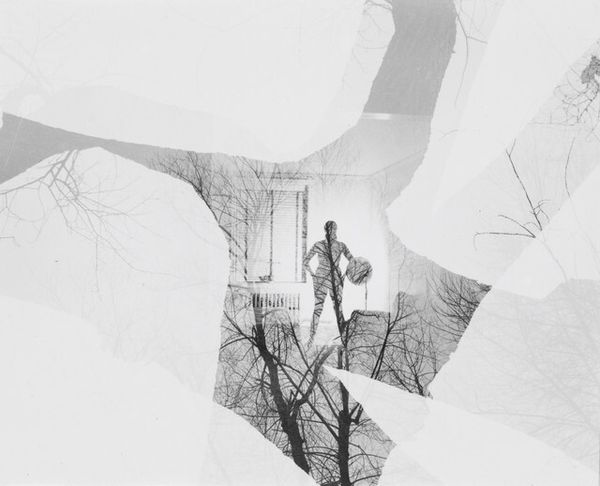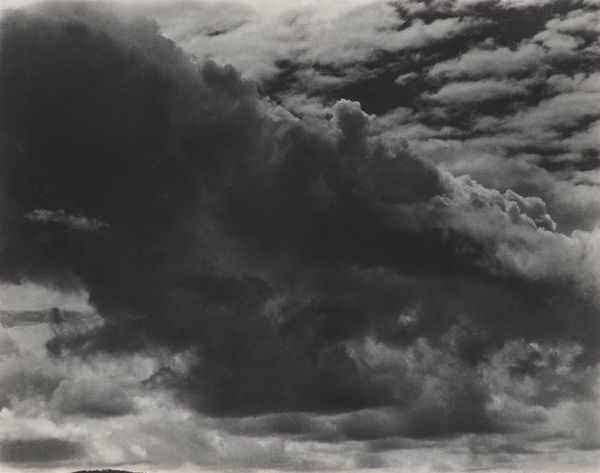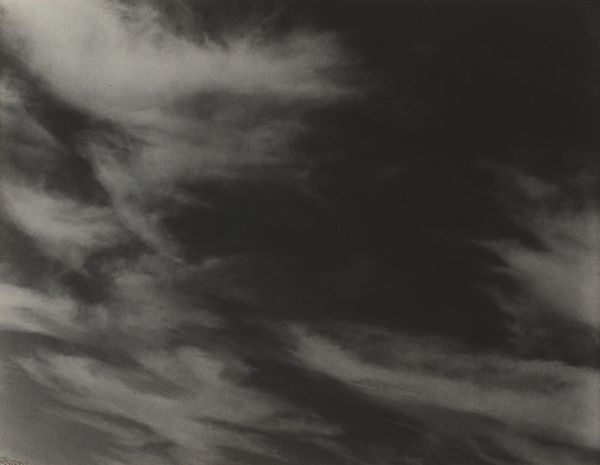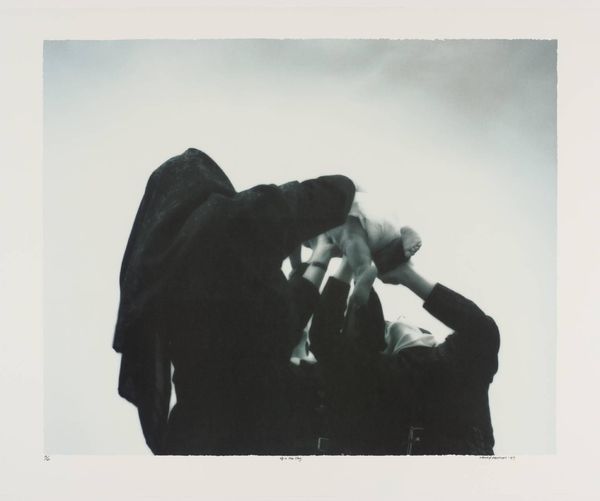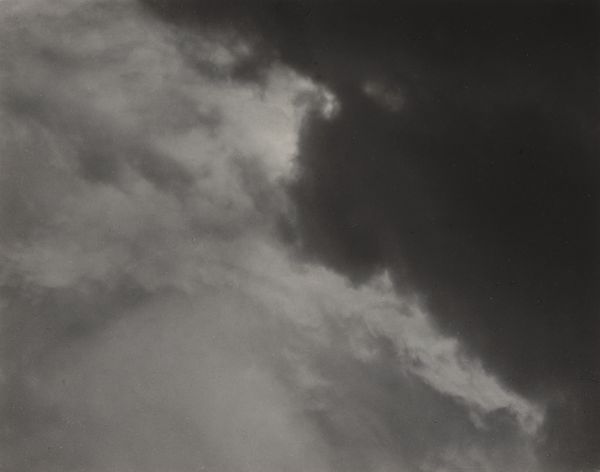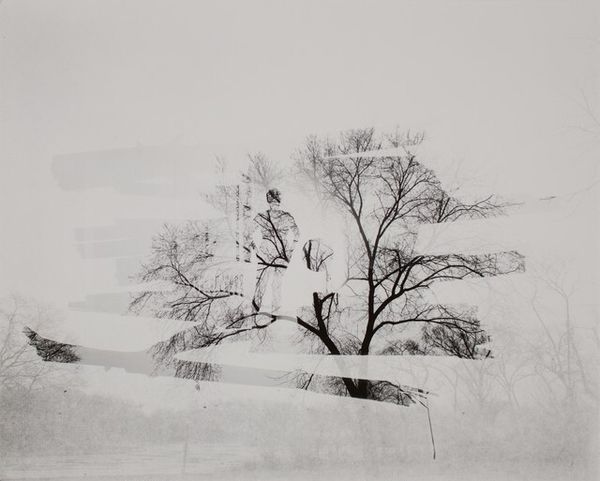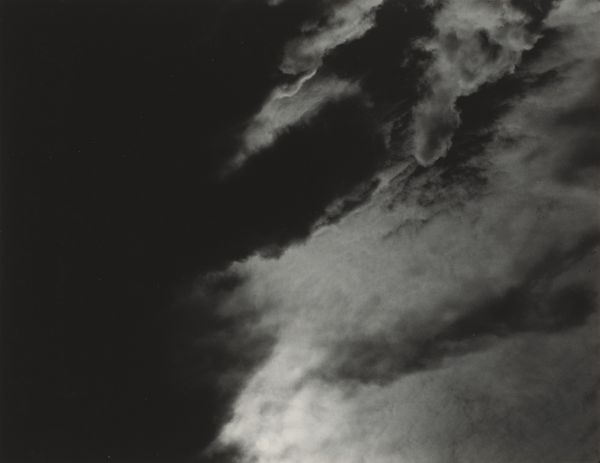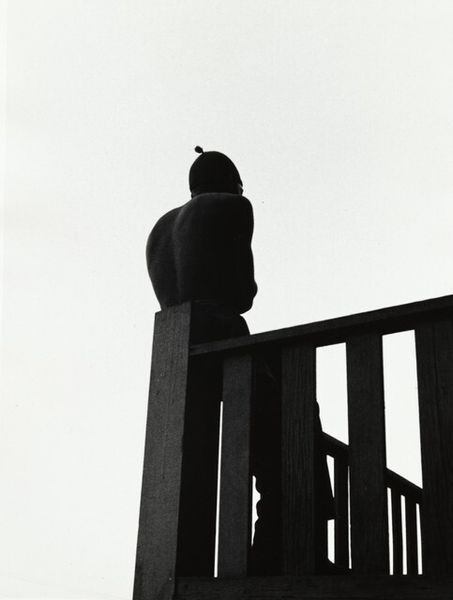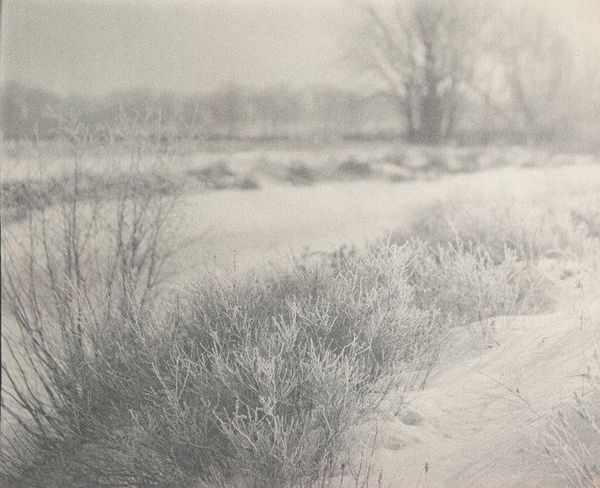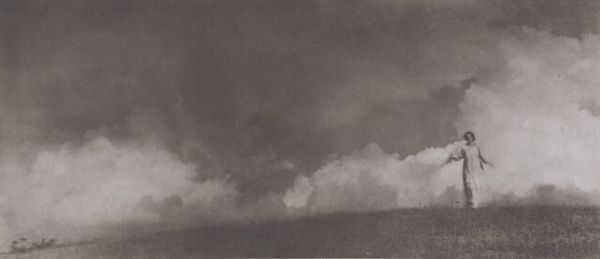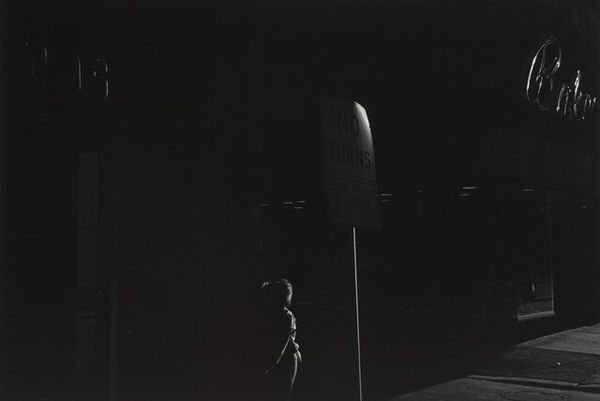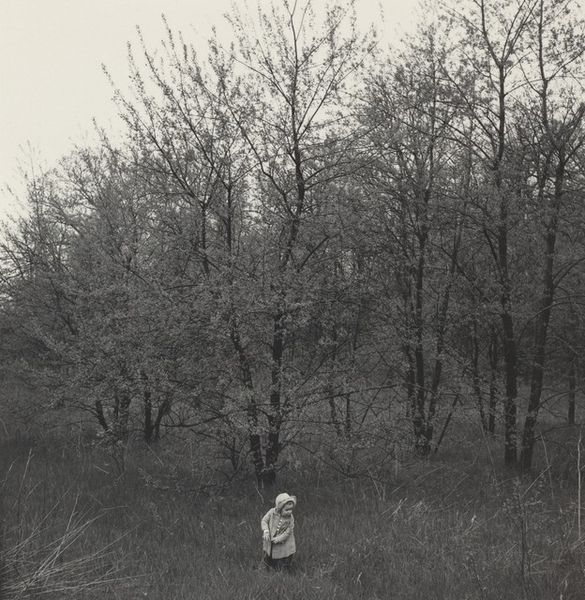
photography, gelatin-silver-print
#
portrait
#
photography
#
gelatin-silver-print
#
realism
Dimensions: image: 13.6 × 20.3 cm (5 3/8 × 8 in.) sheet: 35.56 × 27.75 cm (14 × 10 15/16 in.)
Copyright: National Gallery of Art: CC0 1.0
Curator: Looking at this image, I'm immediately struck by the overwhelming feeling of isolation. The figure, huddled against what appears to be a snowstorm, feels incredibly vulnerable against the vast expanse of white. Editor: Well, this is an Untitled gelatin-silver print from 1963 by Larry Clark. Thinking about process, the starkness we see is achieved through the particular sensitivity of silver halide crystals reacting to light, further intensified in the darkroom. We must consider the accessibility and relative affordability of photographic materials, which empowered artists to engage with realism by documenting the world around them with greater immediacy. Curator: I hadn't considered the material aspect so directly, but that makes sense. And what about that vehicle—is it a truck—faintly visible in the background? I wonder if that provides some implicit social commentary. Clark captured a period of change and often marginalisation. Was the photographic decision to locate it that way to evoke that? Editor: It could be. I'm also fascinated by how this seemingly straightforward image points to complex considerations in the social hierarchy of art. Here is photography, with its indexicality and roots in working-class availability, moving towards serious museum considerations during the mid-century. The very act of taking this image—what would be acceptable art? Curator: Yes, photography did challenge existing academic traditions. It has a raw, documentary feel—a slice of life presented with minimal embellishment, focusing attention on those often overlooked subjects. It challenges, in a sense, elitism. Editor: Right. What Clark documented were individuals on the periphery. We should consider the role institutions played in shifting perceptions and accepting more democratic modes of representation that were now acceptable for public viewing and art appreciation. The question then becomes: how are images mediated through power? Curator: Considering it now, knowing the history behind its increasing popularity during this period, this feels almost daring. Capturing a specific moment while prompting broader reflections on contemporary life, identity and social standing. Editor: Exactly. Considering materials, process, historical placement and how that translates socially allows us to appreciate not just the aesthetic but how artworks speak within greater structures of power. Curator: A sobering reflection indeed.
Comments
No comments
Be the first to comment and join the conversation on the ultimate creative platform.

